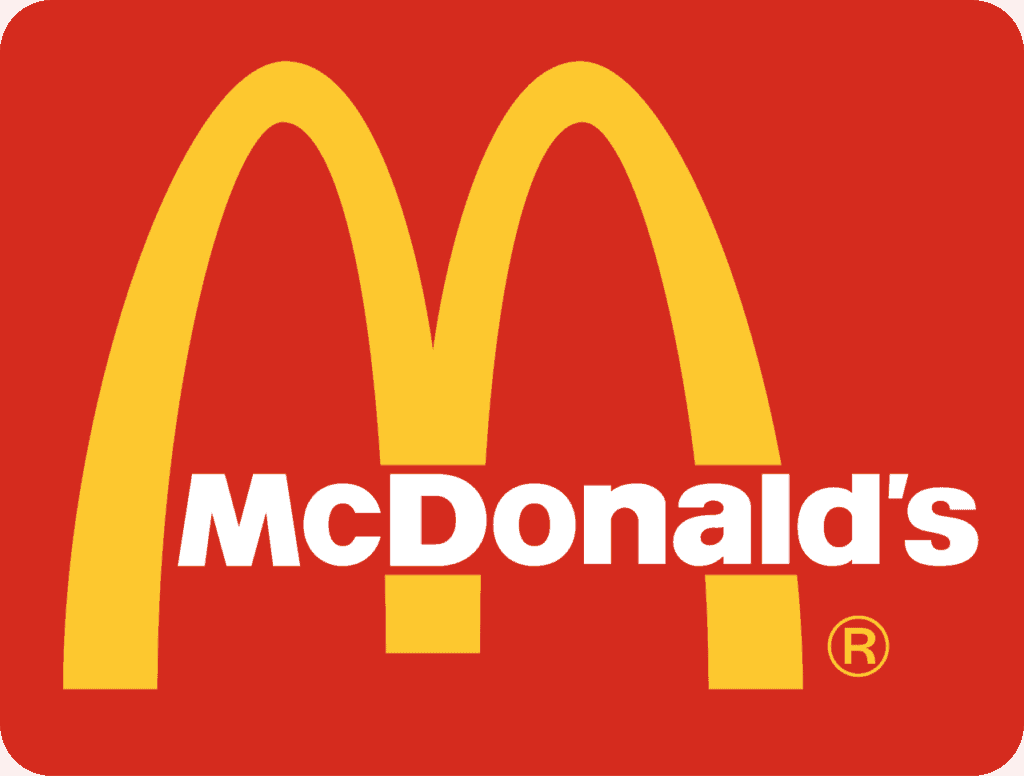
The world is filled with words.
There are wise words. Buzzwords. Kind words.
Magic words.
Four-letter words
Empty words.
And famous last words.
Words can incite anger. Ignite passion. Hurt, humiliate, heal or help.
Words matter.
Today, I’d like you to consider another kind of word.
Your Word.
Your word is your promise. Your pledge. Your sacred vow.
As in “You have my word” – derived from the Chivalric Code of moral conduct and personal integrity observed by medieval knighthood.
It means “You can count on me.” “I will keep my word.”
Whether you are DTC, B2C, B2B or personal brand, few things are as important as your brand’s word.
Your word is your North Star.
A beacon to everyone who comes in contact with you – internally and externally.
It builds trust, loyalty and understanding.
One word can focus and anchor all of your initiatives.
Protect you from making bad decisions.
Positioning pioneer Al Ries wrote: “A brand should strive to own a word in the mind of the consumer.”
Advertising legend, Lord Maurice Saatchi called it One-Word Brand Equity. Its goal is to define your brand’s overarching strategic thought in a single word.
Express the one characteristic you want your brand to instantly be associated with around the world.
“When a company owns one precise thought in the consumer’s mind, it sets the context for everything and there should be no distinction between brand, product, service and experience.”
Think of the strongest brands, you’ll recognize their one word instantly.
Google = Search.
Coca-Cola= Happiness.
Nike = Inspiration.
Harley Davidson = Freedom.
AirBnB = Belonging
Whatever your politics, you can’t think of the word Hope without thinking Barack Obama.
Pretty powerful. And with thousands of words in the English language – no small feat.
It requires applying brutal simplicity.
Lord Saatchi wrote: “Take great care before you pick your word. It is going to be the god of your brand.’ So how do you find your word?
- Be Inspiring. Your word should matter to your audience so that it forms a deep attachment with them. What is your audience craving that no other brand can deliver?
- Be Lived – When we created the Origins Brand for Estée Lauder, we recognized that the beauty industry often belittled the consumer. Our promise was Respect. And while the word Respect never appeared in any communications, we brought it to life in every aspect of the brand from ingredients (Opting for natural vs. harsh and questionable ingredients to show Respect for our consumer’s skin) to our service model (Respect for our consumer’s intelligence meant we empowered our audience with the information they needed to make a thoughtful decision) to our pricing (Respect for our consumer’s pocketbook made Origins affordable) to Respect for the environment (By not overpackaging and offering the first of its kind recycling program).
- Be timeless, not trendy. For example, while the circumstances and context may change, words like Respect, Belonging and Inspiration will always be valuable and relevant.
Once you have your word, own it. And never deviate from it.
For instance, Volvo’s one word promise is Safety. And since the 1940’s everything they do has been dedicated to it. From creating 2 and then 3-point seat belts. To inventing rearward-facing child safety seat.
So, forget your long-winded brief. The yada, yada, yada. And blah, blah, blah.
Forget the catchy tag line.
Your pithy, well-crafted 30 second elevator speech. For now, anyway.
Today, people have the average attention span of just 8.25 – less than a goldfish.
And when the battle for attention is intensified: ‘Simplicity travels lighter, travels faster and is easier for us to recall,” said Saatchi.
Find your word early in the life of your brand.
Make it your promise. Your sacred word of honor.
Keep your word and you’ll create a strong, lasting bond with your audience.
But remember, break your word. Fail to deliver on it. And your brand is screwed.
You have my word on that.
© Robin Albin LLC, d.b.a. Insurgents.
What does the word brand mean to you? Is it a badge, a logo, a name, a colour or a collection of these things?
For me a brand is something that runs much deeper than that – the best way that I have heard it described is as a promise. For example, if you buy a can of Heinz beans, you know what you are getting and they deliver every single time. It is the same with Innocent smoothies and companies like Apple, Google and Nike.
These companies have a promise and they align the three main parts of their business – culture, product or service and reputation – around it. From who they hire, to what they make, to what people say about them – everything is in line with the brand promise.
So, ask every member of your team to explain your brand in a sentence that your grandmother could both “get” and get excited about. Do they all say exactly the same thing? If not, you may have an issue.
However for a SME with limited resources, finding your brand promise and redesigning your brand identity can seem frivolous or even a waste of time. But there is a low-cost solution that has stood me and my clients in good stead over the years. We call it finding your brand DNA, and when you have done this it should be the lens through which you view and filter all business decisions – such as who to hire, what to sell and where to sell it.
How to find your brand DNA
Start off by choosing 8-10 people from across your organisation (or if you are smaller run it with who you have). Ideally attendees will be from different departments, levels of seniority and length of service. Hire a venue outside the office, put aside a half day, and set a date.
Find a facilitator (who must be an objective outside party) to run the day. They force the group to make decisions on every question and encourage discussion. The questions that the group must answer are:
1) What are you?
Describe your business as if you were describing it to your grandmother. No corporate jargon and no waffle.
2) Who is your target customer?
If you could only have one type of customer for the rest of your business life, who would that be?
3) Why would this customer use you?
Think of all of the possible reasons why customers would use your product or service. List as many as possible, and have a vote on the main reasons.
4) What are your competitors’ advantages?
Take three competitors that are keeping you awake at night and allocate each one to a team. Ask them to pretend that they are in charge of those companies and list all the reasons why they are better than your company – be honest, brutal and factual. You then have the chance at the end of each presentation to say why you are better than the competitor. The four or five clear unique selling points/competitive advantages should be clear after this exercise.
5) What’s your brand personality?
Take a good range of recent magazines (travel, music, gossip, home, food, photography, sport). Pass these out to the group and ask them to find one picture each that encapsulates the personality of your company. Ask people to present their pictures, and words that describe them, to the group. Write up the main personality words and then narrow all the collated words down to four that describe your brand.
6) What’s your tone of voice?
Once you have agreed on your brand personality keywords, select supporting words for the main brand personality words. For example, if brave is one of your main brand personality words, it could mean that pioneering, confident and spirited are good supporting words for your tone of voice.
With these questions answered, now it’s time to put your brand DNA statement together.
Pull all of the answers together – think of it as your Cluedo moment. You start the positioning statement as follows: “Our role in the life of our customer is …”. An example could be: “Our role in the life of our customers is to help thrill-seekers and culture vultures travel the world to make the most of their free time on a budget without harming the planet.”
You then weave in what you do, who the customer is, their motivation, and how you do it. This should be a tight paragraph that has no waffle in it. It will be packed full of everything that you have discovered over the session.
Finally, can you take your brand DNA statement and sum it up in two words? Think of this as a shorthand version of your longer brand DNA statement, for everyone in your business to keep at the back of their mind.
Mark McCulloch is the founder and chief executive of WE ARE Spectacular.
Generally, people consider a name, logo, colour, and even sound to be a brand. While they’re partially correct as these do form elements of a brand, they are just scratching the surface.
The brand is an intangible asset inherent to the offering, forming its identity, experience, and/or characteristic(s) that differentiates it from others in the market.
But still, branding is a term rarely understood – majorly because the lack of a proper definition of brand that clearly explains what it exactly is and why is it important to know the difference between a brand and its elements.
So, here’s a guide explaining what is a brand, its importance, types, and elements.
A brand is the combination of properties within and outside an offering that gives it an identity and makes it distinct from others.
According to Kotler, a brand is a –
Name, term, sign symbol (or a combination of these) that identifies the maker or seller of the product.
In simple terms, a brand is the sum of all the attributes inherent to the offering, used to develop the offering’s identity in the market.
History Of Branding
The concept of branding goes back to 2,700 BCE when ancient Egyptians used to burn their mark (or brand) onto their cattle to differentiate them from other people’s cattle.
In fact, even the term brand is derived from the Old Norse word “brandr” meaning ‘to burn’.
The modern practice of branding, however, started in the late 1800s when Coca-Cola decided to differentiate its products from other generic products by painting everything in its brand colour, developing the patented design of its bottles, and printing logos on company-owned products.
Importance Of A Brand
Taken the fact that most of the markets today are saturated with companies offering similar products, developing a brand has become imperative to develop a favourable perception of the offering in the market and stand out.
Here are a few reasons why developing a brand is important –
- Gives Identity: A brand is the identity the offering sits on. Branding assigns tangible and intangible and inseparable attributes like name, logo, colours, voice, shape, etc. to the offering that helps develop a personality that has a distinct identity in the market.
- Aids Recognition And Differentiation: A branded offering is easily recognised and differentiated from other products in the market.
- Aids Marketing: Marketing requires an identity that needs to be promoted. It becomes easier to promote a branded product than a non-branded one.
- Increases The Value: Brand becomes an intangible asset that has its own value. This value, when attached with a generic offering, increases its overall monetary and non-monetary value.
- Helps In Gaining Trust: Giving an identity to the product aids recognition, which, in turn, helps in gaining the trust of the customers. The brand provides the product with a name that can be trusted.
Types Of Brands
While there is one definition of brand, the concept’s application differs for different aspects. Generally, a brand is categorized into three umbrella types. These are –
- Offering Brand: When an identity is built around a tangible or intangible offering, it is referred to as an offering brand. This offering can be anything from product, service, to place, event, or a cause.
- Corporate Brand: This is the brand of the parent company that deals with the offering. Usually, a single company offers more than one branded offering. In such cases, a corporate brand is also developed to differentiate the corporate identity from the brand identity.
- Personal Brand: Famous personalities and other aspiring individuals develop a brand of their own differentiating them from others. This is personal branding.
Characteristics Of A Brand
A brand is an inherently valuable asset that has the following characteristics –
- Intangible: It is an intangible asset that can’t be separated from the offering. It is a perception of the identity the offering has that is often used to recognise it and differentiate it from other products.
- Dynamic: A brand is more of an experience than just an identity. Every customer might have a different perception of the brand according to his/her experience with the same.
- Distinctive: The sole purpose of developing a brand is to develop a distinctive identity having human-like features like name, colour, personality, etc.
- Amorphous: Branding doesn’t have constraints. Offerings are branded, and brand experiences are created at almost every touchpoint, and such experiences and interactions have infinite possibilities.
- Emotional: Branding is when a human-like personality is associated with an offering. Such human-like personalities develop emotional connections with customers.
- Highly Recognisable: Brands are highly recognisable and differentiable. They have their own attributes that help their customers recognise and differentiate them from generic offerings as well as from other players in the market.
- Consistent: A brand develops an identity which, when consistent, develops an image (perception) in the minds of the customers. Hence, consistency is an important characteristic of a brand.
Brand Elements
The brand is the sum total of all the visual and non-visual, tangible and non-tangible elements that drive the perception of the customer and makes him believe what the company wants him to. These brand elements include –
- Visual Identity: Brand visual identity includes the recognisable and communicable brand outlook like name, logo, colour, slogan, typography, graphics, etc.
- Brand Associations: These are the associations that come to the customers’ mind when they think of the brand . These can be advertisements, brand ambassadors, brand’s offering features, class, lifestyle, emotions, etc.
- Brand Purpose: Brand purpose represents what the company stands for and what are its social obligations towards society, consumers, and the environment.
- Brand Promise: It’s the value customers expect to get whenever they interact with the brand or buy its offerings.
- Brand Identity: Brand identity is the set of all the branding activities a company indulges in order to be perceived in a particular way to the target audience.
- Brand Personality: Brand personality is the association of human characteristics and traits with the brand to which the customers can relate.
- Brand Voice: Brand voice is the uniformity in the selection of words, the attitude and values of the brand while addressing the target audience or others.
- Brand Image: Brand image is an aggregate of beliefs, ideas, and impressions that a customer holds regarding the brand.
- Brand Experience: Brand experience is awakening a holistic sensory experience to build an all-rounding relationship between customers and a brand.
- Brand Equity: Brand equity is the aggregate of assets and liabilities attached to the brand name and symbol, which results in the relationship customers have with the brand.
- Brand Architecture: Brand architecture is an organized structure of the company’s portfolio of brands, sub-brands, and other offerings.
Brand Examples
The world today is saturated with brands. Everywhere a person goes, everything he uses, wears, or eats, is transformed into a brand. Here are some notable examples of brands to elaborate on the concept –
Coca-Cola
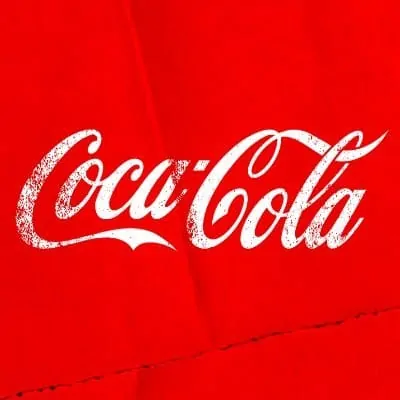
Coca-Cola is a perfect example of both a corporate brand and an offering brand. As an offering, it offers the world-famous soft-drink cola that has its own –
- Colour – red
- Emotion – happiness
- Shape – patented bottle
- Voice – positive, friendly, and down-to-earth, and
- Equity – 84 billion U.S. dollars.
As a corporate brand, it’s a parent to 500+ brands selling in 200+ countries worldwide.
McDonald’s
Ranked as 6th most important brand in the world, McDonald’s brand value lies at a whopping $129 billion.
The company follows the same visual identity worldwide –
- Logo – big M
- Colours – red and yellow
- Mascot – Ronald McDonald
…and operates on the same values. Moreover, this corporate brand makes sure that its offering brands’ names are prefixed with the term ‘Mc’ to maintain consistency.
Go On, Tell Us What You Think!
Did we miss something? Come on! Tell us what you think about our article in the comments section.
A startup consultant, digital marketer, traveller, and philomath. Aashish has worked with over 20 startups and successfully helped them ideate, raise money, and succeed. When not working, he can be found hiking, camping, and stargazing.
One word branding is not a new concept, I just gave it a name. In short, one word branding is the process of picking one word (or phrase) that your brand owns in the minds of consumers. Here are some examples:
- Volvo = safety
- Harley Davidson = freedom
- Disney = family
The purpose of one word branding is to narrow the focus of your marketing and branding efforts to find out how you want your brand to be positioned in the marketplace and in the minds of consumers. By picking one word or phrase to signify that position, your marketing investments will be be more targeted and more effective.
One word branding is another way of identifying and meeting customer expectations. Once you know what customers expect from your brand, you are better able to meet and exceed those expectations. One word branding is an easy way to remember the most important expectation. If you can’t live up to the one word that your brand owns in the minds of consumers, then your brand is doomed to failure.
What other brands can you think of that own a word or phrase in the minds of consumers? Leave a comment and get the conversation going!
Photo: Flickr
Reader Interactions
What is a Brand?
The word “brand” is a comprehensive term “A brand is a name, term, symbol, or design or a combination of them that is intended to identify the goods or services of one seller or group of sellers and to differentiate them from those of competitors”.
[toc]
Branding is the management process by which a product is branded. It is a general term covering various activities such as giving a brand name to a product, designing a brand mark, and establishing and popularizing it.
Branding is an important part of product management, which involves researching, developing, and implementing brand names, brands, marks, trade characters, and trademarks.
What is a Brand Name?
A brand name is a part of a brand consisting of a word, letters comprising a name that is intended to identify the goods or services of a seller or a group of sellers and to differentiate them from those of a competitor.
The brand name is a word or combination of words used to identify a product and differentiate it from other products. All brand names are trademarks, but not all trademarks are brand names. The brand name is that of the brand that can be vocalized.
A brand name may be, but need not be a trading name. For example, Coca-Cola is a trading name that is also the brand name of the company’s leading product.
What is Brand Mark?
A brand mark is the part of the brand which appears in the form of a symbol, design, or distinctive coloring or lettering. For example, Ganda Phenyl.
What is Trademark?
A trademark has been defined as any sign, mark, symbol, word, or word, which indicates the origin or ownership of a product as distinguished from its quality and which others do have no equal rights to employ for the same purpose.
A trademark is a brand name, brand mark, or trade character or combination thereof with legal protection. When registered a trademark is flowed by R.
Business firms need some techniques to differentiate their products from those manufactured by others. This is efficiently done by trade-marking them by using letters, words, groups of words, symbols, signs, or any combination of these.
What are Patents?
Patents are public documents offering certain rights, privileges, titles, or offices. A patent confers the right to the use of a technical invention. When a new invention is made, it is registered so that an exclusive right is obtained by the inventor to use it.
What is Copy Right?
This is an application in the case of books and is used in the same meaning as that of patents. It is the sole right to reproduce literary, dramatic, musical, or artistic work. Copyright is available for the whole of the author’s lifetime and sixty years after his death.
Difference Between Brand and Trademark
The process of branding includes the functions of giving brand name and trademark to any product. However, there are some differences between brand name and trademark. The difference between brand and trademark can be mentioned as follows:
- Registration
- Legal Protection
- Scope
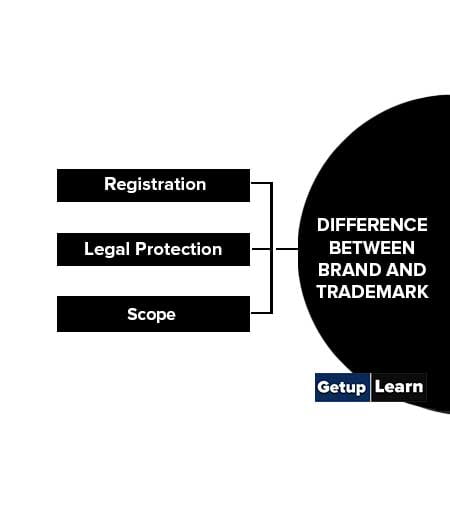
Registration
Any name, word, letter, symbol, design or any sign composed by combining them is called brand. If the same sign is legally registered in the concerned government office, it called trademark.
Legal Protection
Trademark is provided legal protection, No other company or firm can use this trademark except the producer or seller, which has got it registered. But brand or any symbol, sign can be used by other firms or competing companies. No legal action can be taken even if any company imitated a brand used by other company.
Scope
All trademark includes in brand but all brands may not be trademarks. So, all trademarks are brands, but all brands are not trademarks. In this way, there is basic difference between trademark and brand.
Both of them involve in branding, both of them give identity of products and differentiate from same type products of other companies. But legal protection can be acquired only from registered trademark.
Advantages of Brand Names
There are many advantages of brand names to the manufacturers, distributors and consumers:
- Vehicle of Goodwill: It works as a vehicle of goodwill to the seller, by which the article presented for sale may be organized and made effective as a cumulative force in selling. It may prove a valuable asset to the seller.
- Stability of Sales Volume and Price: The seller achieves greater stability of sales volume and greater stability of price through transforming his product, to the maximum possible degree in specialty goods.
- Healthy Brand Create a Sound Image of the Company: If it wants to bring out new product line or categories they will be welcomed by the customers. This is because the first impression can be a lasting impression.
- Brand Names Make the Product Easily Distinguishable and Identifiable: Markets are often very large with a massive range of similar products. There is usually a need to differentiate a product from that of the competitor. This is efficiently done by branding.
- Symbol of Quality: Consumers look upon the brand names as a symbol of product quality of a product’s characteristics and feature and as a symbol of the satisfaction product supplies.
- Insurance: Branding is an insurance of merchandise comparability when the buyer uses more than one source of supply. Philip’s light bulbs are Philips’s light bulbs, regardless of where purchased.
- When the brands contribute to the sound reputation of the companies, middlemen also get benefit out of it because their effort to act between the manufacturer and the end user are minimized.
- If a firm has one or more lines of branded goods, it can add a new item to its product mix much more easily than a company selling unbranded merchandise.
- A firm can advertise its product and associate each brand and its characteristics in the buyer’s mind. This aids the consumer in forming brand image, which are the perceptions a person has of particular brand.
- As social visibility becomes more meaningful, a product’s prestige is enhanced via a strong brand name.
- People feel less risky when buying a brand with which they are familiar and for which they have a favorable attitude. This is why brand loyalty occurs.
- Branding provides another king of satisfaction to the consumer. When they are satisfied with a particular band they do not regret paying for it. They feel it worthwhile and reasonable.
Choosing a Brand Name
There are four branding decision a firm must undertake. These involve corporate symbols, the branding philosophy, choosing a brand name and using trademarks. We will discuss here only the “choosing a brand name”.
Selecting the right brand name is one of the most vital yet a tricky and frustrating element in developing a new product. A good product with a lackluster name may not sell as well as a mediocre product with an intriguing name.
And once it is chosen and the product is out on the market. Changing or modifying the name is not only difficult but also rather harmful, getting it right the first time is essential.
In the quest for making the brand name play well in the market the firms ought to ask themselves a few question that are related with the impact of the brand name upon the customers. The questions are represented in the figure:
The first hurdle to be overcome is to decide what type of name is appropriate. These are:
- Names whose meanings bear no connection to the product (Aravalli Scooters, Arrow Shirts)
- Names that sound interesting but have no meaning (Kodak, Sony)
- Names that are borrowed from words in other language (Lux)
- Names that belong to company founders (Ford, Tata)
- Names that are company initials (HMV)
- Names that suggest a function or quality of the product (Cool Foam)
- Names that are taken from myths and legends (Atlas, Hercules).
In each of these categories, various innumerable possibilities maybe explored. Therefore, the main criterion should be to see whether or not the name selected will help to sell the product.
Types of Brands
Following are the types of brands explained:
- Individual Brands
- Family Brands
- Manufacturing Brands
- Dealer Brands
- Generic Brand
- Licensed Brand
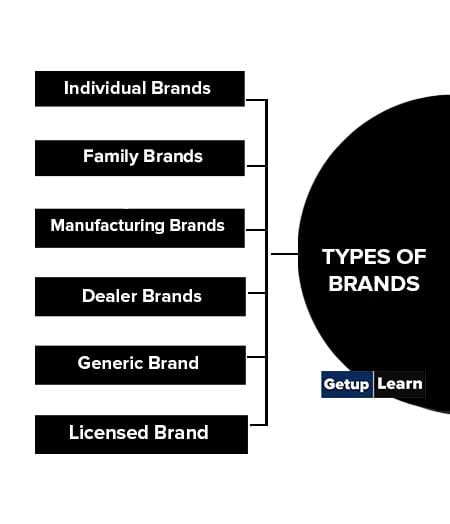
Individual Brands
A Company using individual brands uses separate brand names for each product, when its products vary in quality or type. If the products are really different such as Hindustan Lever Ltd. (HLL) – Individual brands are Pears, Lux, Lifebuoy, Rexona, Close-up and for Godrej- Individual brands are Cinthol, Ganga, Evita, glory, Marvel.
Sometimes firm use individual brands to encourage competition within the company. Each brand is managed by a different group within the firm. Management feels that internal competition keeps everyone alert .The theory is that if anyone is going to take business away, it ought to be one of the company’s own brands.
Family Brands
Branders of more than one product must decide whether they are going to use a family brand- the same brand name for several products-or individual brands for each product.
For examples, of family brands are like Godrej (cosmetics, refrigerators, and hair dye), Kissan (jam, ketchup, squashes, and pickle), Tata (oil, Salt, tea, machinery, watches, and steel), Maggie (sauce, noodles, pickle, and jam), Bata (shoes, sleepers, socks).
The use of the same brand for many products makes sense if all are similar in type and quality. The goodwill attached to one or two products may help the others, thus cutting promotion costs. It also tends to build loyalty to the family brand and makes it easier to introduce new products.
Manufacturing Brands
Manufacturing brands are brands created by manufacture. These are sometimes called “national brands”- because the brand is promoted all across the country or in large regions.
Such brands include Kellog’s, Whirlpool, Ford, and IBM, And creators of service-oriented firms-like McDonald’s. These brands spend a lot of money in promoting their brands in the same way that other products do.
Dealer Brands
Dealer brands are brands created by middlemen. These are sometime called “private brands” Manufacture and dealer brand names depend on whether the product is owned by producers or by intermediaries.
If the brand is owned by manufacturer that brand is classified as manufacture/national brand otherwise it is a dealer/private brand.
Generic Brand
Generic brand is also called as ‘No Brand’. Under the generic brand, product remains unbranded or without a brand name. Widespread consumer goods and pharmaceutical products, which are inexpensive and plainly packed, are under generic or no brand products. Most of the goods purchased by Indian household consumers are non-branded or generic products.
Generic products are most common for staples-especially food product and drug items. Typically, these are offered in plain packages at lower prices.
Licensed Brand
Here the brand names are licensed on ‘rent’ by the established manufacturers to the sellers of goods by tacking royalties or fee. These brands can have immediate effect on customers mind since the brand name used is well established in the market.
Branding Strategies
Following are the branding strategies adopted by the marketer:
- Line Extensions
- Brand Extensions
- Brand Licensing
- New Brands
- Co Branding
- Mixed Brand
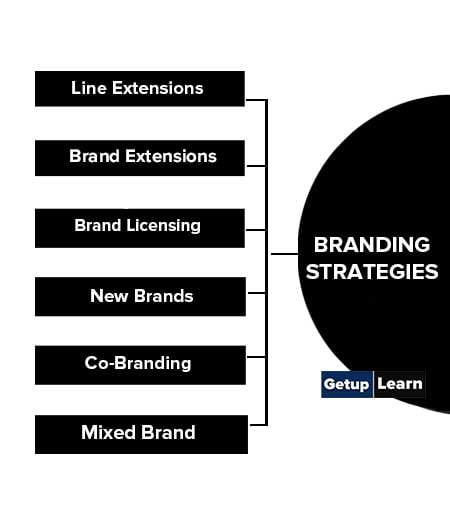
Line Extensions
Here the existing brand name is extended to new sizes or flavors in the existing product category. For instance a company can introduce additional products in the same line or product category using the existing brand name.
Brand Extensions
Branding strategy that uses an existing brand name to promote a new or improved product in a campany’s product line or product category. This strategy’s risk is overextending a product line and diluting the brand with too many products.
Brand Licensing
It involves a legal licensing agreement for which the licensing company receives a fee, such as royalty, in return for allowing another company to use its brand/brand/mark/trade character.
New Brands
New brand for a new category product.
Co Branding
Co–branding can be defined as a partnership between the marketing activities of at least two or more different brands which are also independent providers of products and services. This type of marketing strategy can involve various types of marketing activities like advertisements or sponsorships.
This association should be beneficial for all the brands involved when they are aligned rather than when those products are promoted individually.
Mixed Brand
Some manufacture and retailers use a mixed brand strategy to sell products. They offer a combination of manufacture, private distributor, and generic brands.
For example, A manufacturer of a national brand might agree to make a product for sale under another company’s brand.
Advantages of Branding
Branding is very important for a company to distinct its products and services from others. Branding is not only important to the owner but also important to consumers and retailers. Following are the advantages of branding:
- To Consumers
- To Owners
- To Intermediaries
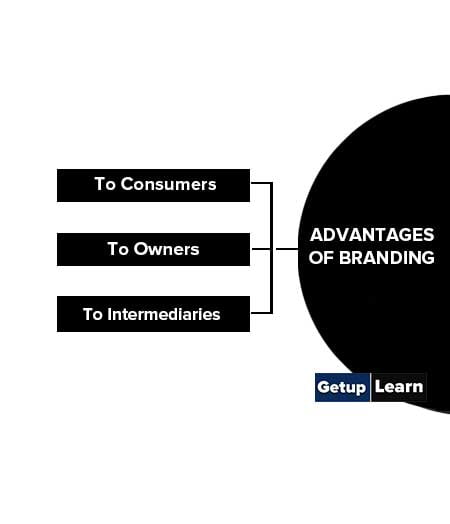
To Consumers
- Consumer can easily identify the products as they are distinctive. For example, a G Star Jeans is easily distinguishable from H&M, Next or Zara’s Jeans because G Star puts their sign or name (96, G Star) on the pocket.
- It gives some feelings to the consumers when they shop branded products. For example, if someone buys an Armani watch he/she feels prestige.
- It reduces risk in purchasing because consumer knows the quality, features and other benefits of products without using it.
- Helps to have quick buying decision because brand attracts consumers.
To Owners
- Companies can charge premium price. For example, Next plc, Armani, Lactose, Harrods etc charges premium price because they have strong brand name.
- It gives opportunity to the company for line extension through building on the consumer’s perception of the values and character represented by the brand name.
- It helps owners to create consumer loyalty as it gives value to the consumers what they pay for.
To Intermediaries
- Branded items make easier for the suppliers to process the orders and track down problems.
- Retailers are happy to sell branded products because they are good seller. In terms of Jobber and Fahy (2006) branding helps to enhance.
- Company’s value.
- Consumer preference and loyalty.
- Barrier to competition.
Disadvantages of Branding
These are the disadvantages of branding explained below:
- Cost
- Impersonal
- Fixed Image
- Timescale
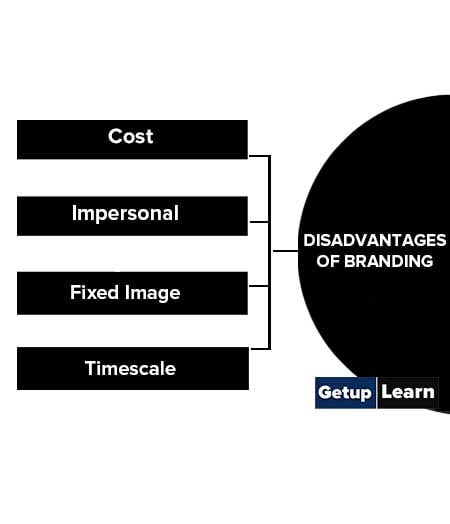
Cost
If you wish to create and maintain a strong brand presence, it can involve a lot of design and marketing costs. A strong brand is memorable, but people still need to be exposed to it, this often requires a lot of advertising and PR over a long period of time, which can be very costly.
There are also costs involved with the creating of a brand image or logo (Paying for a designer, printing new letterheads/business cards etc.), and although most of these are only one off costs, they are still relatively large for most small businesses.
The exposure of your brand can be left to word of mouth, this will save you money, but will also greatly slow down the exposure your brand receives.
Impersonal
One of the main problems with many branded businesses is that they lose their personal image. The ability to deal on a personal basis with customers is one of the biggest advantages small business have, and poorly designed branding could give customers the impression that your business is losing its personal touch.
Fixed Image
Every brand has a certain image to potential customers, and part of that image is about what products or services you sell. If you are known for selling just one product, and you want to sell another product, will you be able to do so effectively?
If you sell computers, would your brand name be suitable for selling vacuum cleaners? If your brand is focused too strongly on one product, it can limit your ability to sell other products.
Timescale
The process of creating a brand will usually take a long period of time. As well as creating a brand and updating your signs and equipment (For example, Stationary, vehicles etc…), you need to expose it to your potential customers.
It is commonly shown that people need to see an advert at least three times before they absorb it, which means you will need to advertise and promote the brand for a considerable amount of time before it will become well known.
FAQ Related to Branding
What are the types of brands?
Types of brands are:
1. Individual Brands
2. Family Brands
3. Manufacturing Brands
4. Dealer Brands
5. Generic Brand
6. Licensed Brand.
What are the advantages of branding?
These are the advantages of branding:
1. To Consumers
2. To Owners
3. To Intermediaries.

